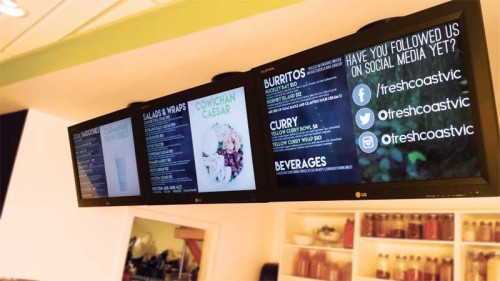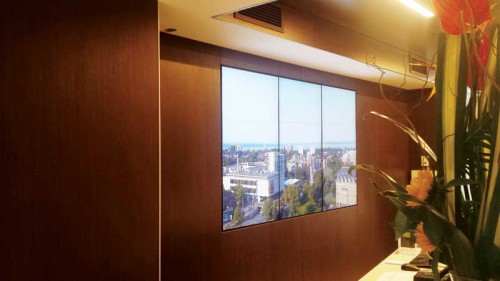
Photos courtesy ENS
By Jeremiah Archambault
Finding success in the rapidly growing medium of digital signage is a little bit like skydiving: while it may be a fun, exhilarating experience with a lot of really cool-looking gear, if one were to begin without a plan, some training, some testing of that gear and a predefined target, the outcome could be disastrous. Yet, the ‘look before you leap’ approach has been relatively uncommon in the digital signage industry. Many vendors and clients rush in without determining a logical process to take them from start to finish.
The following are some ‘best practices’ based on past digital signage deployments, to help sign shops achieve their goal of satisfying the client and earning continuous revenues from successful projects.
1. Source technology that works well for the location
To ensure both digital signage hardware and software will deliver on their promise, it is important to test them together before installing them at a client’s location. Of course, it is also important to ask what the client wants.
The most common screen sizes are 0.8, 1 and 1.4 m (32, 42 and 55 in.). While there are also many smaller and larger options, the popularity of these sizes means it is easier to source cost-
effective mounting brackets for them. Similarly, the client should be asked how the screens will be oriented. Portrait mode (vertical) tends to yield much higher viewership than landscape mode (horizontal), but care must be taken to order commercial-grade screens designed to display in portrait orientation. Landscape-friendly screens, by comparison, are almost priced as throw-away items, even those that can last for many years.
The easiest installations are those on flat walls, which can use flat or tilt mounting brackets. The next easiest are corner installations, which require articulating mounts instead. The mounting surface itself must offer sufficient reinforcement to accommodate the additional load.
Ceiling mounts are trickier. The client may not know what is above the ceiling tiles, so it is important to check the suitability of mounting spots early on. This way, unexpected cost overruns can be avoided; there is nothing worse than quoting a $50 flat bracket only to discover a $500 custom pole mount is actually needed because of a false ceiling.
With all of this in mind, it is important to survey the site with an actual walk-through prior to quoting the job. For multi-site rollouts, including national networks, the client will need to confirm all locations have the same layout. If not, the project budget will have to be adjusted to accommodate multiple walk-throughs and, potentially, different mounting hardware for different locations.

Hilton’s Doubletree Hotel in Victoria streams ultra-high-definition (UHD) ‘4K’ video content in real time from a roof-mounted camera to a video wall comprising three 1.4-m (55-in.) panels in portrait mode behind the reception desk. Guests say they enjoy the panoramic views of the city’s inner harbour and downtown core.
2. Plan for connectivity and power needs
Network connectivity and power supply are among the most important and often overlooked requirements. Larger corporate clients, if notified in advance, can often ‘move’ power and networking to the intended mounting spot, enabling a hassle-free installation.
Most smaller businesses will skip this step and ask for their digital signage to be plugged into whatever systems are already on-site. In these cases, the signage provider should determine how both power and networking will be made available to the screen(s). Otherwise, there could be support request calls every time there’s a power hiccup, the router needs rebooting or the Internet service provider (ISP) has an issue.
Indeed, power and networking are the most important elements of the site survey. Many retail stores, for example, have networks that are ‘locked down’ by their point-of-sale (POS) terminal provider or their information technology (IT) team, so it is important to bring along a networking cable and notebook computer to verify access for the digital signage network, e.g. via Wi-Fi. Large corporate customers usually have an in-house team responsible for approving any devices connecting to their networks. For smaller businesses, it may be even easier to arrange approval in advance with their IT contact.





